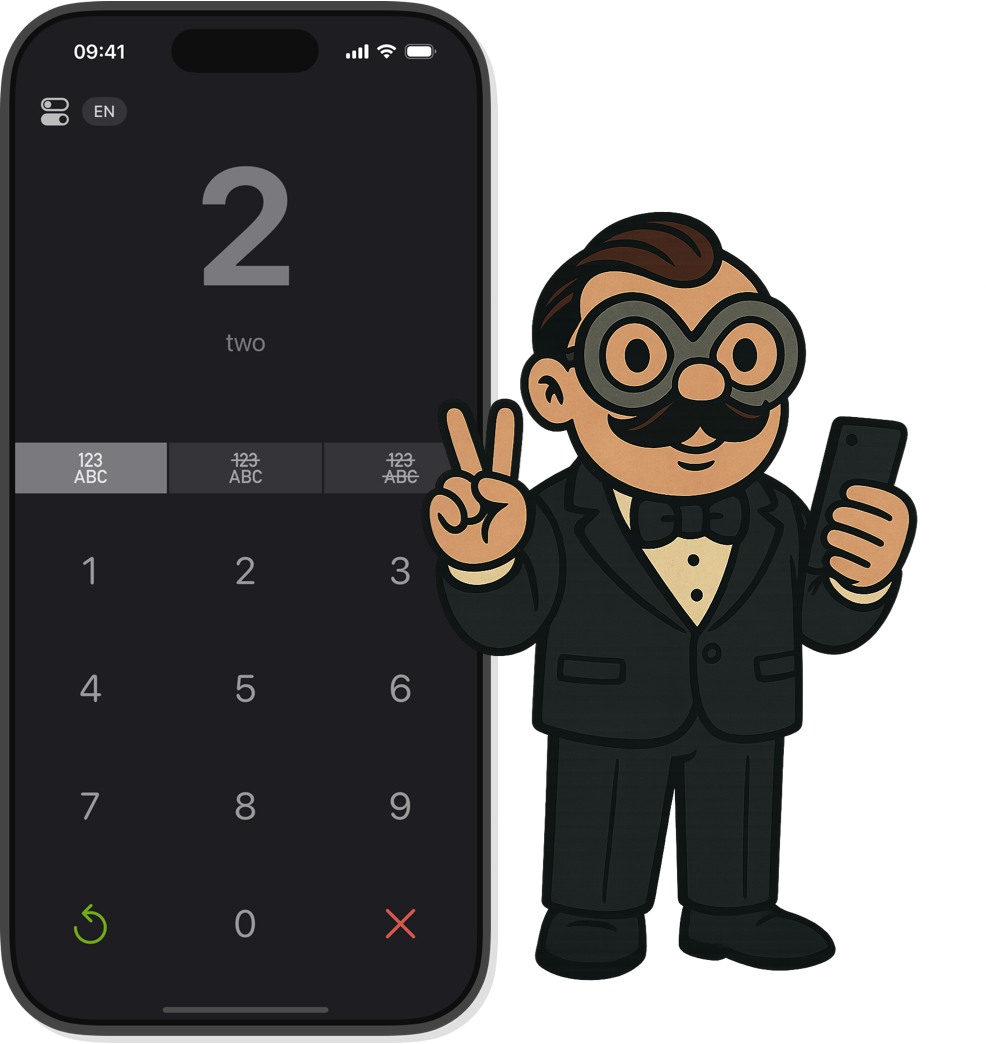Portuguese Numbers: For Brazil and Portugal
The Portuguese number system is very regular. From 21 onward, numbers are connected with "e" (and), like in "vinte e um". Tips & rules for learning all numbers from 1 to 100.


How Portuguese Numbers Are Structured
The Portuguese number system is very logically structured. Most numbers follow clear rules, with the key feature being the use of "e" (and).
- 1-10
-
Basic numbers: um/uma, dois/duas, três, quatro, cinco, seis, sete, oito, nove, dez
These must be memorized. Um and dois have feminine forms (uma, duas).
- 11-15
-
Irregular forms: onze, doze, treze, catorze, quinze
Like in Spanish, these numbers have their own unique names and must be learned separately.
- 16-19
-
Formed with "dez-": dezasseis, dezassete, dezoito, dezanove
Combination of dez + basic number. In Brazil: dezesseis.
- 20-99
-
Tens + e + ones: vinte e um, trinta e dois, quarenta e três
From 20 onward, the tens and ones are connected with "e" (and).
- 100+
-
Hundred: cem (100), cento e um (101)
Cem stands for exactly 100, cento is used for 101-199.
Portuguese Numbers from 1 to 100
All Portuguese numbers from 1 to 100 in overview. Perfect for systematic learning and quick reference.
Test Your Portuguese Number Skills
Can you match these numbers correctly? How confident are you with Portuguese numbers from 1-100?
Pro tip: App for targeted number training. Did you know there's an app dedicated exclusively to numbers in foreign languages? With the Numfred App, you can specifically learn Portuguese numbers.
Learn Portuguese numbers with the Numfred App!
The app designed to help you master listening comprehension for numbers in foreign languages.
- Free basic number ranges
- Learn numbers in 13 languages
- No subscription. No registration.
- Ad-free
Hundreds, Thousands and Large Numbers
Here are the key numbers and their formation:
- 100
-
cem
Standing alone: cem. In combination: cento e um, cento e dois…
- 200-900
-
duzentos, trezentos, quatrocentos, quinhentos, seiscentos, setecentos, oitocentos, novecentos
The hundreds agree with gender: duzentos (masculine) vs. duzentas (feminine).
- 1,000
-
mil
One thousand
- 1,000,000
-
um milhão
One million
- 1,000,000,000
-
mil milhões
One billion (in Portugal). In Brazil: um bilhão.
- 1,000,000,000,000
-
um bilião
One trillion (in Portugal). In Brazil: um trilhão.
Common Pitfalls When Learning Numbers
Hearing or quickly pronouncing numbers can be challenging. These cases often lead to confusion:
-
Gender agreement (um/uma, dois/duas):
vinte e um anos (21 years) vs. vinte e uma pessoas (21 people). Numbers 1 and 2 as well as the hundreds agree with gender. -
Similar-sounding numbers:
seis (6) and sete (7) or dezasseis (16) and dezassete (17) can easily be confused when speaking quickly. -
"Cem" vs. "cento":
100 = cem (standing alone or before thousand/million)
101-199 = cento e ... -
Brazil vs. Portugal:
Besides minor spelling variations (dezasseis vs. dezesseis), the biggest difference is with large numbers: One billion is mil milhões in Portugal, but um bilhão in Brazil.
Understanding and Using Numbers in Daily Life
In spoken Portuguese, numbers are often pronounced quickly – especially when dealing with:
-
Time expressions:
É uma hora = It's one o'clock
São três horas = It's three o'clock
três e um quarto = quarter past three (3:15)
três e meia = half past three (3:30)
um quarto para as quatro = quarter to four (3:45)
dez para as seis = ten to six (5:50)
nove e vinte e cinco = twenty-five past nine (9:25) -
Money amounts:
sete euros e cinquenta cêntimos = €7.50
vinte e dois euros e trinta cêntimos = €22.30
massa, guita = money (slang)
São dezoito euros. = It's eighteen euros. -
Years:
1500 → mil e quinhentos
1998 → mil novecentos e noventa e oito
2024 → dois mil e vinte e quatro -
Basic math operations:
8 + 4 = 12 → oito mais quatro são doze
10 - 3 = 7 → dez menos três são sete
5 × 5 = 25 → cinco vezes cinco são vinte e cinco
20 ÷ 4 = 5 → vinte dividido por quatro são cinco -
Fractions and decimals:
½ → metade, meio
¼ → um quarto
0.5 → zero vírgula cinco
3.14 → três vírgula catorze
Unique Features of Portuguese Numbers
Portuguese has certain linguistic conventions and unique characteristics when dealing with numbers. Here's an overview of typical features:
-
The conjunction "e" (and):
"e" is used to connect tens and ones (e.g. vinte e um), hundreds and tens (e.g. cento e vinte), and thousands and hundreds (e.g. mil e cem). -
Gender agreement:
The numbers for 1 (um/uma) and 2 (dois/duas) as well as all hundreds from 200 to 900 (duzentos/as, etc.) agree with the gender of the noun. -
Number notation with periods and commas:
Unlike in English, Portuguese uses periods for thousands and commas for decimals (European style):
1.000,50 = mil vírgula cinquenta -
Differences between Brazil and Portugal:
Besides minor spelling variations (dezasseis vs. dezesseis), the biggest difference is with large numbers: One billion is mil milhões in Portugal, but um bilhão in Brazil.
Explore other languages:


